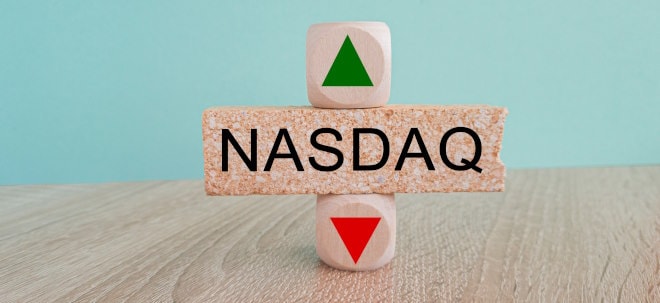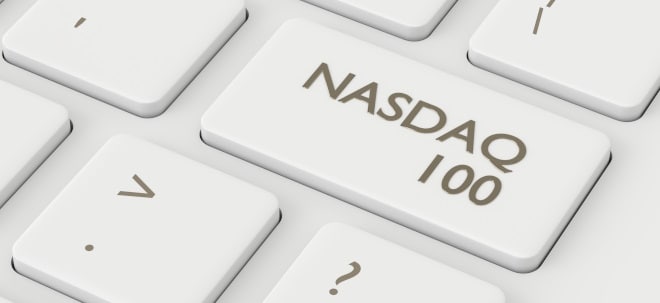Rio Tinto and Glencore discuss potential merger
Werte in diesem Artikel
Rio Tinto and Glencore have been discussing combining their businesses, according to people familiar with the matter, Bloomberg reported. The Australian mining giant and the Swiss commodities trader and miner have recently held “early-stage talks” about a deal, according to the newswire adding that “it’s unclear whether the talks are still live.”Rio Tinto is the world’s second most valuable mining company and shares with its Melbourne-based neighbour BHP the distinction of being valued at more than $100 billion, but only just. Rio’s stock was worth $103 billion on Thursday while Glencore, which in 2023 made an unsuccessful bid for Canada’s Teck Resources, is valued at $55 billion in London – placing it sixth.As with BHP’s failed attempt at acquiring Ango American last year a Rio and Glencore combination is centred around copper, thanks to the bellwether metal’s bright long term prospects as the central commodity enabling the global energy transition.Together, Rio and Glencore’s copper production would rival that of BHP. Glencore’s guidance for 2024 is around the 1 million tonne mark while Rio Tinto’s upper target is 720 kilotonnes. A Rio-Glencore combination would leapfrog long-running number one BHP, which is worth $125 billion, but mining’s top tier is trading well below their peak reached in the second quarter of 2022. There have been many attempts for M&A at the top of the global mining industry – notably in 2008 when then BHP Billiton attempted to take over Rio. Copper price: What’s in store for 2025Regulators in a number of countries opposed the deal and BHP eventually walked away from the $116 merger when the sub-prime mortgage crisis seized up financial markets.Big 5’s troubles News of a possible merger comes at a difficult time for mining’s traditional big 5 – BHP, Rio Tinto, Glencore, Vale and Anglo American – that trace their roots back many decades if not more than a century.According to the MINING.COM Top 50 ranking, together the stalwarts shed 25.3% or $119.7 billion of their combined value in 2024 as their bread and butter commodities – copper and iron ore – went into retreat. The rampant dollar over the final months of 2024 only compounded losses: MINING.COM’s Top 50 considers performance in US$ market capitalisation terms, not share price changes in local currency on domestic exchanges. In the past these companies would, apart from wobbles as the Chinese supercycle became just a cycle, consistently occupy the top five slots in the ranking, supported by vast asset portfolios covering a range of commodities across many regions. Now the big diversifieds stocks – the mining industry’s now erstwhile version of the Mag 7 – make up less than 28% of the total index, down from a height of 38% at the end of 2022. Vale, down 44.9% for the year, a dismal outcome made worse by the 22% fall in the real last year, is the ranking’s worst performer of the year. Vale topped $100 billion in value briefly in 2022. Now the Rio de Janeiro based giant’s market cap is down to $37.7 billion and the counter has dropped out of the top 10 position pushed out by Indonesian upstart Amman Mineral.Anglo American is not a top 10 company anymore either but has the distinction of being the only one of the old guard which ended 2024 in positive territory, adding $5.5 billion or 18.1% last year. How much of that valuation is the lingering effects of BHP’s approach is debatable, but long term investors will still be carrying the shock of January 2016 when Anglo’s market cap fell below $5 billion after it came close to suffocating under a pile of debt. Glencore trades but does not mine iron ore, iron ore has been the cash cow for the big 5 as China’s massive infrastructure investment sucked upwards of 80% of seaborne cargoes and prices flirted with $200 a tonne. In 2011, iron ore came with some of the fattest margins mining had ever enjoyed. With two-thirds of pre-tax profits coming from the steelmaking raw material that year BHP recorded a $24 billion windfall, Vale reaped $23 billion, Rio racked up $15 billion and Anglo made $11 billion. Today the steelmaking ingredient is back to double digits and a looming supply surge coupled with the prolonged construction malaise in China, offer little hope of a return to the go-go days.Copper potentialMining’s old guard needs strong medicineAfter hitting record highs in 2024, copper looked poised to bring back windfall profits to the Big 5, but the rally soon fizzled. With the copper-heavy Anglo deal dead in the water a pivot to organic growth is under way at BHP with up to $10bn being spent on Escondida alone, the world’s largest copper mine. Rio Tinto benefits from the fact that BHP has been working its Melbourne neighbour’s 30% stake in Escondida so hard while its Resolution copper project in Arizona languishes in permitting hell. The long-running battle to expand Oyu Tolgoi in Mongolia also seems to have reached a steady state, but Rio’s diversification bent and penchant for opportunistic investment are intact. The company, one of only two miners with a $100 billion-plus valuation (and only just at the end of 2024) spent $6.7 billion to buy into lithium in 2024 just as its Jadar project in Serbia was thrown a lifeline. Whether the project goes into production is still in dispute, much like the prospects for lithium. Glencore finally got a piece of Teck Resources last year, but ad to settle for the Canadian miner’s met coal business in a deal worth $6.9 billion. With geopolitics and global trade entering ever more dangerous territory, Glencore may find its trading business beginning to throw off cash. The Swiss company which has for decades been negotiating commodity trading waters few are willing to wade into may also want to avoid the Las Bambas effect. The prospects of an IPO for Vale’s base metals spin-off seems to be vanishing into the distance and is now scheduled “going into 2027”. Moreover, the $25 billion to $30 billion promised spending to build up the business seems lavish with copper and nickel’s medium term prospects less than inspiring. Weiter zum vollständigen Artikel bei Mining.com
Ausgewählte Hebelprodukte auf Glencore
Mit Knock-outs können spekulative Anleger überproportional an Kursbewegungen partizipieren. Wählen Sie einfach den gewünschten Hebel und wir zeigen Ihnen passende Open-End Produkte auf Glencore
Der Hebel muss zwischen 2 und 20 liegen
| Name | Hebel | KO | Emittent |
|---|
| Name | Hebel | KO | Emittent |
|---|
Quelle: Mining.com
Nachrichten zu Glencore plc
Analysen zu Glencore plc
| Datum | Rating | Analyst | |
|---|---|---|---|
| 12:01 | Glencore Buy | Goldman Sachs Group Inc. | |
| 11:31 | Glencore Outperform | RBC Capital Markets | |
| 11.02.2025 | Glencore Outperform | RBC Capital Markets | |
| 17.01.2025 | Glencore Outperform | RBC Capital Markets | |
| 16.01.2025 | Glencore Buy | Jefferies & Company Inc. |
| Datum | Rating | Analyst | |
|---|---|---|---|
| 12:01 | Glencore Buy | Goldman Sachs Group Inc. | |
| 11:31 | Glencore Outperform | RBC Capital Markets | |
| 11.02.2025 | Glencore Outperform | RBC Capital Markets | |
| 17.01.2025 | Glencore Outperform | RBC Capital Markets | |
| 16.01.2025 | Glencore Buy | Jefferies & Company Inc. |
| Datum | Rating | Analyst | |
|---|---|---|---|
| 04.07.2024 | Glencore Equal Weight | Barclays Capital | |
| 30.04.2024 | Glencore Equal Weight | Barclays Capital | |
| 16.04.2024 | Glencore Equal Weight | Barclays Capital | |
| 27.02.2024 | Glencore Equal Weight | Barclays Capital | |
| 22.02.2024 | Glencore Hold | Deutsche Bank AG |
| Datum | Rating | Analyst | |
|---|---|---|---|
| 30.04.2020 | Glencore Underweight | JP Morgan Chase & Co. | |
| 25.10.2019 | Glencore Underweight | JP Morgan Chase & Co. | |
| 03.10.2019 | Glencore Underweight | JP Morgan Chase & Co. | |
| 12.09.2019 | Glencore Underweight | JP Morgan Chase & Co. | |
| 28.08.2019 | Glencore Underweight | JP Morgan Chase & Co. |
Um die Übersicht zu verbessern, haben Sie die Möglichkeit, die Analysen für Glencore plc nach folgenden Kriterien zu filtern.
Alle: Alle Empfehlungen


